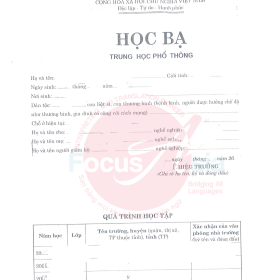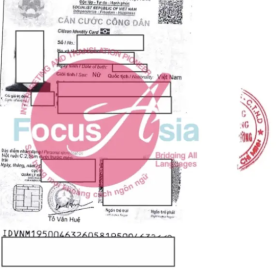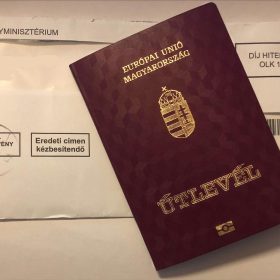DIFFERENCE TYPES OF INTERPRETATION
Are you looking for different types of interpreters? Do you know what types of interpreters exist and how to distinguish them? If you don’t have much information, let’s find out this with Asia Interpretation Company.
Do you know what types of interpretation exist and how they are classified?
Interpreting is a difficult profession and the level of elimination is strong. In addition to having to be fully equipped with relevant knowledge and skills, choosing a suitable type of interpretation is absolutely necessary. Basically, there are currently 4 commonly used types of interpretation: consecutive interpretation, simultaneous interpretation, relay interpretation and whispered interpretation. Each of these types of interpretation have their own advantages and disadvantages that can be found in the section below:
Consecutive interpretation
Consecutive interpreting is the most commonly used type of interpreting today, the interpreter will conduct the “expulsion” interpretation as soon as the person needing to translate (the speaker) completes a sentence. their sentences/ideas/paragraphs/whole part of their speech.
Interpreters need to ensure that the interpretation process goes smoothly, the interpretation needs to translate correctly / closely what the source language shows. To do this, interpreters need to prepare well in terms of vocabulary, especially specialized terms, learn in advance the topic, content and field of the interpretation, etc. In addition, for interpretation To ensure accuracy when translating, interpreters can discuss with speakers in advance where they will stop, or can ask them to repeat or express their ideas more clearly. .
Follow-up interpreting is a type of interpretation where the translator will translate immediately after the speaker finishes a sentence/idea/paragraph/their whole speech.
Follow-up interpreting is suitable for interpretation sessions in a narrow space, with few participants such as press conferences, interviews, presentations, escort interpretations, commercial transactions, etc. This type requires the translator to be able to record good memory, know how to arrange and systemize the data heard, choose the right vocabulary for the target language, etc. However, its biggest disadvantage is that the interpretation will take a lot of time because of the time. If you listen to the speaker speak, you must also include the interpreter’s interpretation time (about 2/3 – 3/4 of the speaker’s speaking time).
Simultaneous Interpretation
Simultaneous interpreting is the most difficult type of interpretation that requires high skill of the interpreter; The interpreter will sit in a soundproof cabin, listen to the speaker speak through headphones and then translate into another language parallel to the language heard into the microphone for the listener to understand. In a word, parallel interpretation means that both the speaker and the translator will speak at the same time and the listener will receive information at the same time.
To perform parallel interpretation, interpreters need the support of devices such as headphones, microphones, etc. to ensure good listening and speaking and not to miss any important information. Parallel interpretation is suitable for important interpretation sessions with a large number of participants such as conferences, seminars, big events of corporations, government agencies, etc. Interpreters want to complete their work well. For this job, you must be able to improvise quickly, be fluent in at least 2 languages at a high level, know how to arrange and arrange suitable words/phrases at the fastest speed, because the nature of parallel interpretation does not give the interpreter time to think or choose words.
Contrary to chase interpretation, parallel interpretation ensures that the speed of the interpretation takes place in accordance with its standard prescribed time, that is, the listener will understand the entire meaning of the speaker as soon as the speaker finishes his or her words even if it’s in another language thanks to interpreters.

Relay Interpretation
Similar to parallel interpretation, relay interpretation also translates the source language into the corresponding target language with the help of devices inside the cabin; however, interpreters will not only translate one but have to translate more than 2 languages. This type of interpretation is suitable for international meetings with the participation of many countries.
Although the relay interpretation process is not too complicated, it contains a situation of “three stars failing” due to misunderstandings leading to the misuse of words/phrases belonging to another target language.
Whispered Interpretation
Whispered interpreting is a type of interpretation similar to parallel interpretation, but the interpreter only translates the source language for a small group of listeners and conducts a small interpretation whispering into the listener’s ear. Silent interpretation is suitable for interpretations that need to ensure confidentiality such as military secrets or business secrets, etc. However, the disadvantage of this type of interpretation is that there are many translators doing the same interpretation work. time in different languages. In addition, the translator can only translate for 1,2,3 listeners to achieve the best effect.
Whispered interpretation suitable for interpretation that need to be kept secret, the interpreter will conduct a small translation and whisper in the listener’s ear
In addition, depending on the actual working conditions and environment, the interpreter can flexibly change/combine different types of interpretation to ensure the smoothest and most successful translation.
Above are 4 basic types of interpretation that interpreters need to know. Hopefully, the information that Asia Translation and Interpretation Company has just shared will be able to help you understand and classify each type of translation needed.






















